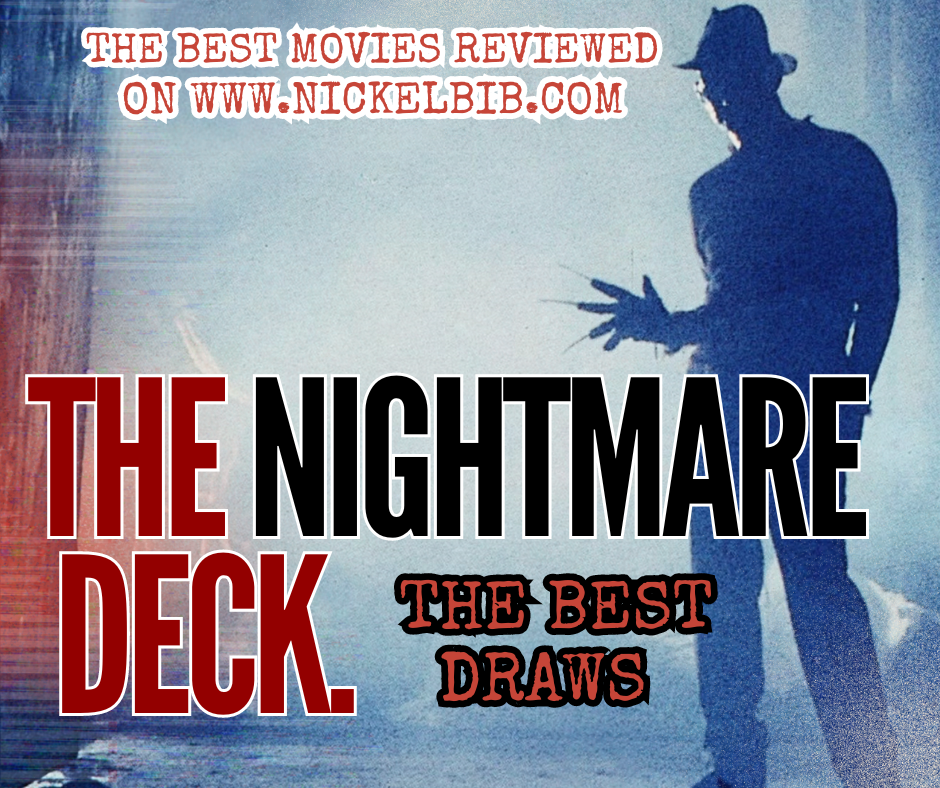Writing about movies has been a hobby of mine for a very long time now. I have written reviews that date all the way back to 2007 that I wrote when I was eleven years old that I have since hidden away and will never let them see the day again, in part because I can’t find them anymore. One of the earliest reviews that I was able to salvage and is still available to read on The ‘Bib is my review of Hellbound: Hellraiser 2, which I wrote when I was fifteen years old. In that review, I was very negative about this film.
Truth is, I feel like a lot of my older reviews tended to slant a little toward the overly critical side of things. I think that can be chalked up to a couple different reasons. Around then, I was exposed to a lot of what I call funnyman YouTube critics that often tended to verge on being overly critical about things (often meant for comedic effect). Nothing against them, but I no longer like to write reviews in bad faith. Especially as I review lower budget fare and it becomes increasingly likely that what I say may come back to that filmmaker, author, or musician. That’s the second reason – I write things in good faith these days. I don’t rubber stamp movies, but I don’t seek movies strictly because it would be easy to deconstruct or criticize.
That in mind, I still don’t imagine I will come away from the Hellraiser franchise with a lot of high marks by the time the rattling chains fall where they land. However, as always, I will do my best to highlight as many positives as I can before making an ultimate summation of what I thought.
This film was directed by Tony Randel in his credited directorial debut. His other credentials include Amityville 1992, Children of the Night, and the TV movie called Sharkansas Women’s Prison Massacre. Just to make sure you didn’t miss it, that’s Sharkansas, a put pitting the word shark with the word Arkansas, so, uh, yeah, I don’t imagine this filmmaker will come up too, too often on The Bib, unfortunately. The film was written by Peter Atkins. Other than this film, he also has writing credits on the third Hellraiser and the original Wishmaster, a film I will most likely get around to writing about one of these days.
Hellbound: Hellraiser 2 carries on from where the original Hellraiser film left off, a decision that can yield mixed results. On one hand, when you do a direct sequel, you offer a sense of continuity and offers an opportunity to build lore and franchise cohesion, but, on the other hand, it can also impact how much the film will be able to stand on its own as a self-contained experience. For example, Halloween II directly follows the events of the original film, and really does feel like it was cut from the same cloth. It really works best as a double-feature paired with the original film. On the other hand, Halloween IV is a sequel as well, but it is ultimately more self-contained. Neither film is exactly revered as a classic, but I digress. In general, I believe the best horror films are the ones that can exist at least mostly on their own merit, acknowledging the original, but treading new ground.
Set after the first Hellraiser, Kirsty Cotton has now been badly traumatized from her meetings with the Cenobites (which sound like a delicious breakfast cereal, but are actually evil, sadomasochistic demon entities) and has since been hospitalized, trying to put together the puzzle pieces of her broken psyche – see what I did there? Meanwhile, all of the doctors and physicians believe she is completely off her rocker.
I can already tell you a criticism I have of this film straightaway – it has an incessant reliance on the original film. I am nearly half an hour into the film and it is still wedging archival footage into its runtime. It would be one thing if it were used as the foundation to reach greater heights or explore new terrain, but it feels more like it expects the original film to take on an unreasonable share of the storytelling. Frankly, this is one of the worst things a sequel can do in my opinion. It is exactly the reason I went on that little spiel about self-containment and a film’s ability to stand on its own. We are one third of the way through this film’s runtime and the film has yet to etch its own path or even make a valid, inspired attempt at it.
The visual of the skinless human remains visually arresting, but it also can’t help but be met with a ‘been there, done that’ sentiment. The only difference this time around is that instead of seeing Frank Cotton crawling around, we are fortunate enough to see a gender-swapped version with Julia Cotton now acting as the bloody meat person.
I like the music. It sounds both grandiose and epic scale, perhaps melodramatic, but no less thematic and moody.
The dialogue sometimes misses the mark, as does the dramatic flare.
There is a new character in this film named Tiffany. She is a little girl and she likes puzzles. That is the sum of it for her character and who she is. By exploiting her, Julia and her new friend Dr. Channard are able to open the Lament Configuration.
Something I am thankful for is the way the Cenobites are able to sustain a wonderful presence to them. Likewise, the production for and portrayal of Pinhead, bolstered by the cinematography and production, along with the presence instilled by Doug Bradley, help sustain the central premise and make them something to look forward to throughout the film.
The film leans into the surrealism of the Hellraiser “world,” but doesn’t live up to the promise that such a concept would suggest. Instead of a celebration of the macabre or a demented wonderland of debauchery, it can sometimes add up to an experience that feels weird for the sake of being weird. I feel that the concept almost overexposed itself by having them enter so directly into their “realm”. I don’t want to play to the parable of less is more and what goes unseen being more interesting than what is explicitly shown, because I don’t particularly think that is what my primary issue is with Hellbound, per se. Sometimes, more is more, and, with a wonderland of terror, I feel like you have an opportunity for a real feast of enticing imagery and ideas. However, for it to work, I feel like it needs real forward momentum, for which, I feel this film lacks.
At the same time, I will also say that they took a lot of the mystique from the Cenobites with this film. It isn’t without some interesting oddball quirks, here and there, but they are far and few between. I liked the visual of Julia’s entire skin being de-gloves when she was pulled back into the labyrinth world of the Cenobites. The practical effects for the Channard Cenobite are fun and gross, and are more in the ballpark of what I wanted from this film. His contribution is by far my favorite inclusion in this film and is one of the only things that dignifies this film beyond being a paint by the numbers sequel.





